While politicos fan hatred, city’s Muslim clerics go about quietly developing sound-light tech that follows noise pollution index and apps to bring muezzin’s call for namaaz to people’s phones
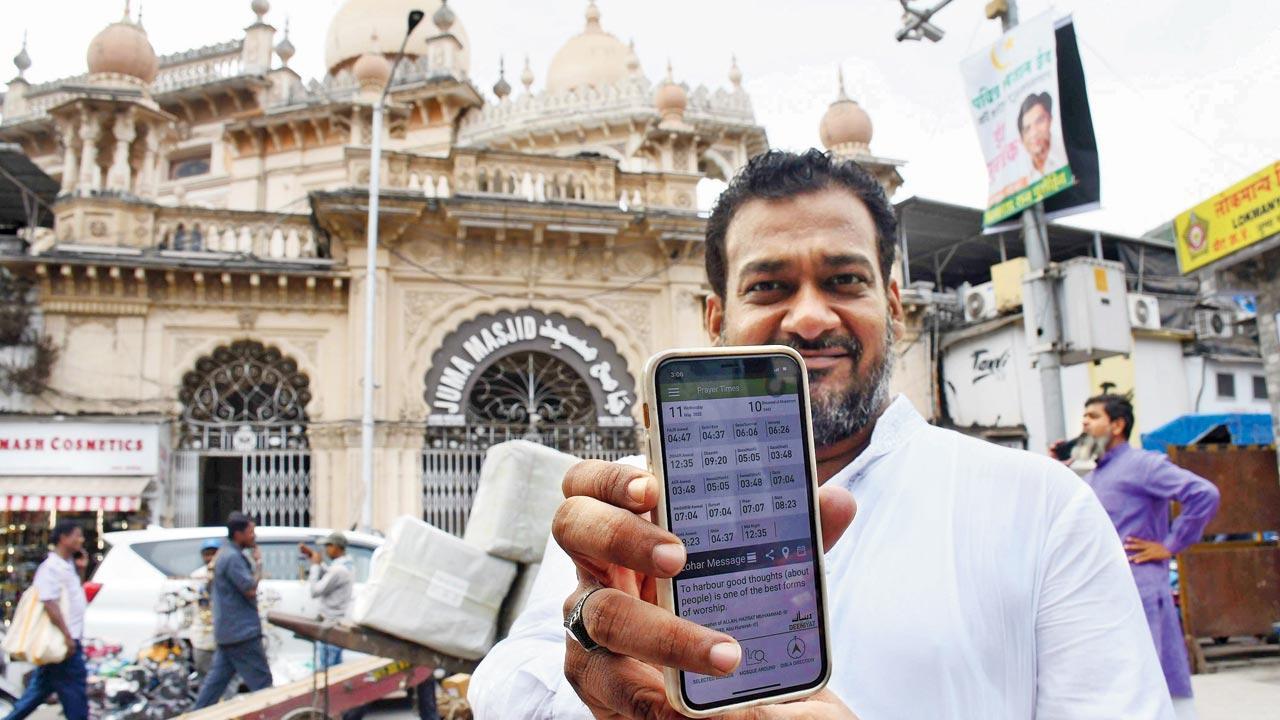
Crawford Market’s Juma Masjid’s trustee Shuaib Khatib is working with techies from Maharashtra College to develop an app based on a model adopted by UK mosques. Pic/Ashish Raje
Stillness is central to prayer. At the over two-century-old Juma Masjid, built over a large water reservoir, this thought was at the heart of its construction. One of the more important religious monuments in the city, which incorporates arabesque art into its design, the masjid wasn’t always surrounded by busy market streets. With Kalbadevi to its right, and the Victorian-era Crawford Market straight ahead, Juma Masjid’s towering minaret has been witness to a sea of change since it was erected in the 1800s. “If you see the old photos of the masjid, you’ll realise that it was staring into a vast open space. There were very few buildings in the neighbourhood and no vehicles at all,” Shuaib Khatib, trustee and chairperson of Juma Masjid of Bombay Trust, tells us over a phone call. The calm and quiet outside not just added to its allure, but also ensured that the azaan—the muezzin’s call summoning Muslims for namaaz—reached far and wide. This was the time when loudspeakers didn’t even exist.
ADVERTISEMENT
To ensure that the azaan could be heard by the devotees, an acoustical innovation was incorporated into the quadrangular-shaped structure’s architecture. “There were two minars constructed at every corner of the masjid, which created an echo effect [that reverberated any kind of sound],” he shares, adding, “This is why we didn’t need loudspeakers back then.” Khatib, however, clarifies that this would no longer be possible, even though the minars still stand. “The commotion on the streets, and the honking vehicles, will drown the sound of the azaan.”
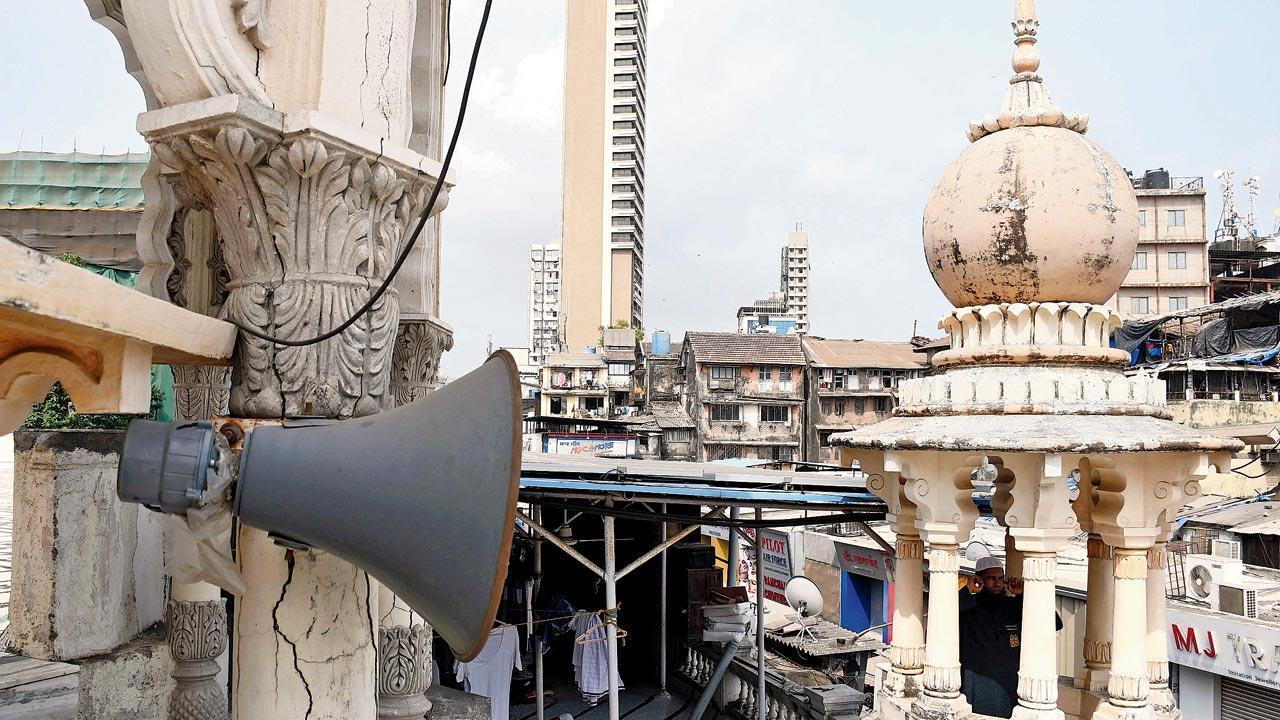 Pic/Ashish Raje
Pic/Ashish Raje
The loudspeakers at Juma Masjid, says Khatib, were installed somewhere in the mid-1900s, to compensate for how noisy the neighbourhood had become. It’s a pity, he says, that the issue of loudspeakers in religious places has now become politicised.
The controversy over loudspeaker use, especially in religious places, has been a recurring one with the SC and high courts across the country taking cognisance of the issue repeatedly. It snowballed recently after Maharashtra Navnirman Sena leader Raj Thackeray, during last month’s Gudi Padwa rally, made a call against loudspeakers amplifying the azaan. He challenged his cousin CM Uddhav Thackeray and the Maharashtra Vikas Aghadi government, saying that he would play the Hanuman Chalisa in front of mosques, if they didn’t remove the loudspeakers by May 3. While the police has introduced a host of measures, to prevent a law and order situation—this included monitoring sound levels at mosques, and ensuring permissions for loudspeakers were taken in keeping with the norms—the political slugfest has refused to abate. On Friday, AIMIM leader Akbaruddin Owaisi made a veiled attack on Raj Thackeray, cautioning his followers against “falling into a trap”. “Those who are barking, let them bark. We should move on like a lion, by ignoring them,” he said.
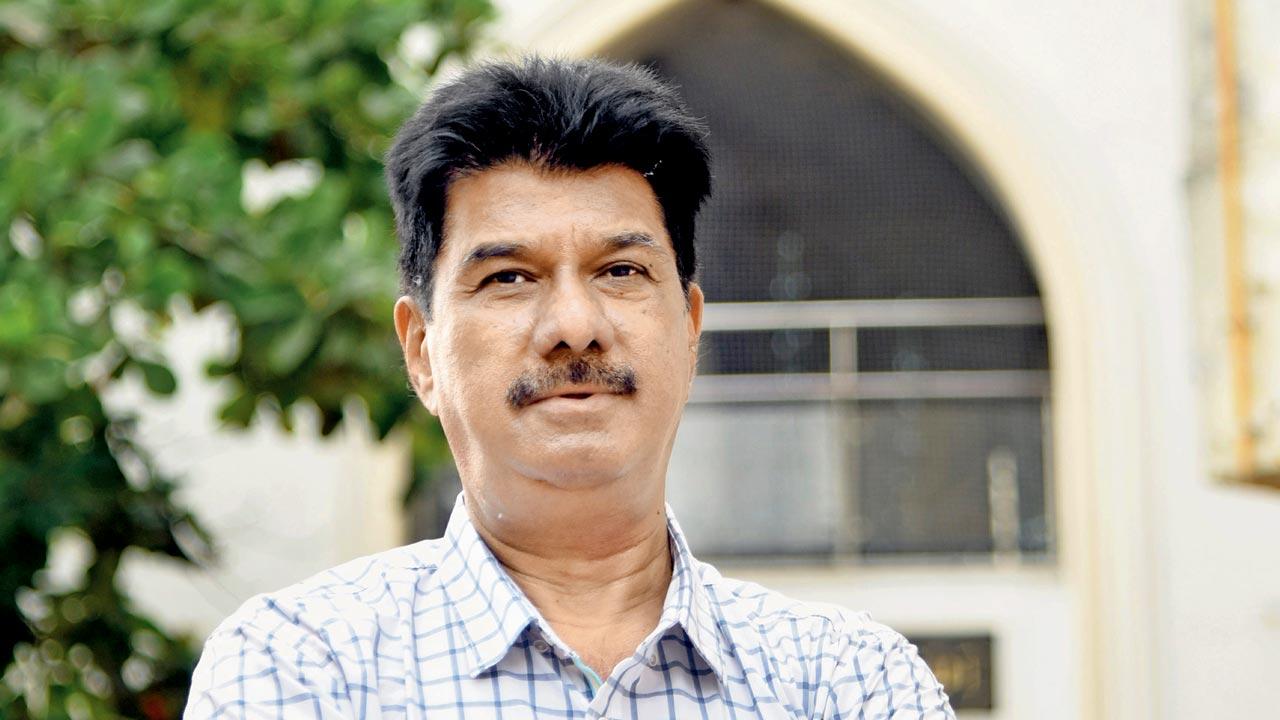 Iqbal Mahadik, president, Mira Bhayander Masajid Madaris Federation and trustee of Sana Masjid
Iqbal Mahadik, president, Mira Bhayander Masajid Madaris Federation and trustee of Sana Masjid
Citing the Supreme Court’s order from July 2005, which banned the use of loudspeakers and music systems between 10 pm and 6 am at public places, Khatib says that it’s important that everyone follows the law of the land, irrespective of religious or political affiliation. “We have to adapt to the times,” he says, adding that the masjid has ensured that they don’t flout rules. With Juma Masjid being the principal mosque in the city, its decision to take the lead is instrumental in effecting change. “We have, through a series of meetings, spoken to trustees of other mosques, and requested them to follow the orders. We are also ensuring that necessary permissions [to use the sound system] are taken from the police. The rules are evolving every day. During Ramzaan, for instance, we had to renew our permissions every 10 days. Now, it’s every month,” he says.
Khatib is currently also working with a team of young techies from Maharashtra College to develop an app, based on a model adopted by mosques in the UK, which will enable users to hear the azaan live from the comfort of their home. “Thanks to technology, we are inundated with such apps. But, this one is being specifically developed by Juma Masjid,” he says. The app should go live in a month or so, he says.
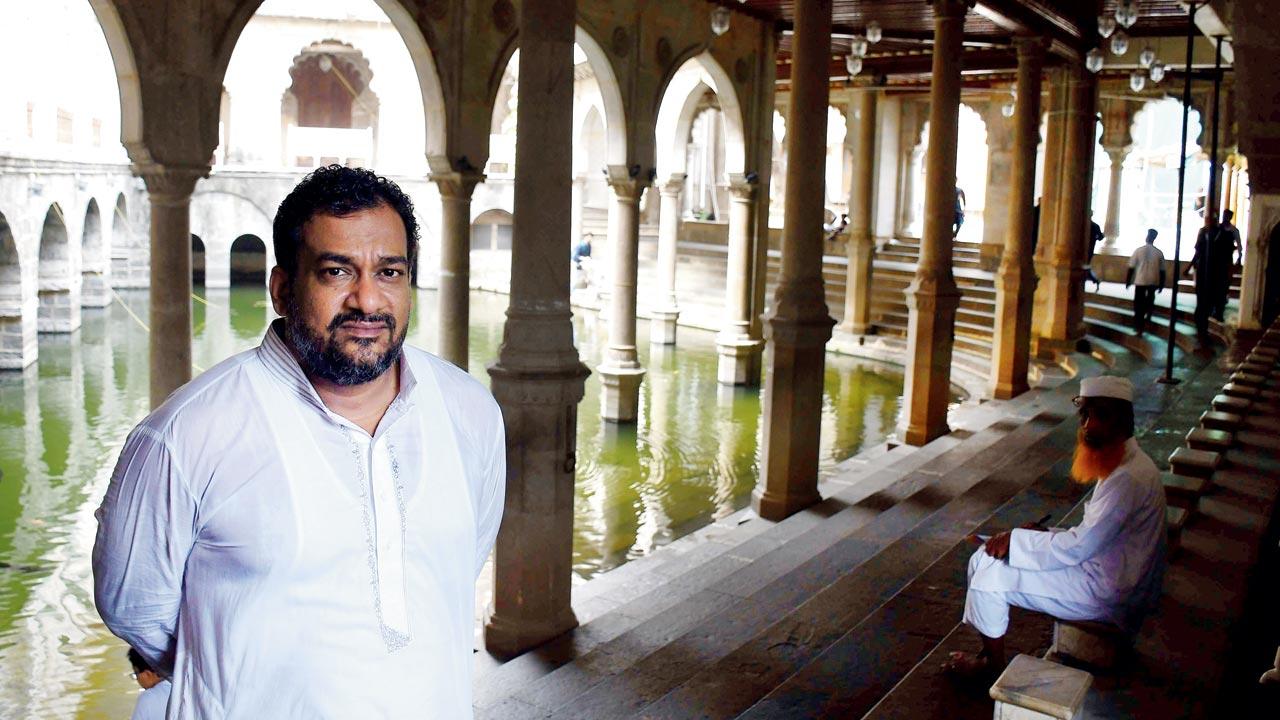 The Juma Masjid in Crawford Market was built in such a way that the minars—it created an echo effect—would ensure the azaan travelled far distances. The loudspeakers, says Shuaib Khatib, trustee and chairperson of Juma Masjid of Bombay Trust, were installed in the mid-1900s. The Juma Masjid of Bombay Trust is now developing an app, so that devotees can hear the azaan live. Pic/Ashish Raje
The Juma Masjid in Crawford Market was built in such a way that the minars—it created an echo effect—would ensure the azaan travelled far distances. The loudspeakers, says Shuaib Khatib, trustee and chairperson of Juma Masjid of Bombay Trust, were installed in the mid-1900s. The Juma Masjid of Bombay Trust is now developing an app, so that devotees can hear the azaan live. Pic/Ashish Raje
Sumaira Abdulali, founder of Awaaz Foundation, was petitioner in the Bombay High Court order and judgement dated August 2016. The order states that “no religion or religious sect can claim that the use of loudspeakers or similar instruments for prayers or for worship or for celebrating religious festivals is an essential part of the religion, a right which is protected under Article 25”. The court further issued orders to restrict decibel levels within legal limits. Abdulali says that the loudspeaker problem is not a political issue, as much as it’s a health hazard. It is important to tackle noise pollution, she says.
Former MLC Muzaffar Hussain agrees. Hussain, who is trustee of the Jama Masjid Al Shams in Mira Road, rebuilt in 1995, has been keenly following the controversy over loudspeakers, and says that it’s high time everyone took the issue seriously.
 Muzaffar Hussain, trustee of the Jama Masjid Al Shams in Mira Road, recently introduced cutting edge software-based light and sound technology in the mosque. “While introducing this new system, we had decided to follow the noise pollution index laid down by the Environment (Protection) Act, 1986 and Noise Pollution (Regulation and Control) Rules, 2000,” he says. Pics/Sameer Markande
Muzaffar Hussain, trustee of the Jama Masjid Al Shams in Mira Road, recently introduced cutting edge software-based light and sound technology in the mosque. “While introducing this new system, we had decided to follow the noise pollution index laid down by the Environment (Protection) Act, 1986 and Noise Pollution (Regulation and Control) Rules, 2000,” he says. Pics/Sameer Markande
The mosque, last year, underwent massive renovation work. Apart from undertaking gold leafing works on the pillars and walls, Hussain introduced cutting edge software-based light and sound technology, imported from the US and Germany. “While introducing this new system, we had decided to follow the noise pollution index laid down by the Environment (Protection) Act, 1986 and Noise Pollution (Regulation and Control) Rules, 2000.” As per the rules, the noise level at the boundary of the public place, where loudspeaker or public address system or any other noise source is being used shall not exceed 10 dB (A) above the ambient noise standards for the area or 75 dB (A) whichever is lower. Further, the peripheral noise level of a privately owned sound system or a sound producing instrument shall not, at the boundary of the private place, exceed by more than 5 dB (A) the ambient noise standards specified for the area in which it is used.
“Any music or sound which leaves you with a pleasant feeling, will always seem appealing. The same goes for the azaan. It has to be soothing and melodious. I have always wanted the azaan here [at Jama Masjid Al Shams] to sound like the ones played at Mecca and Medina.” Apart from playing downloaded audio recordings of the Urdu translation of the Quran and the hadith (a collection of traditions containing sayings of the Prophet Muhammad), which are saved on the iCloud (a cloud storage and cloud computing service), Hussain has also got his team to store recordings of the azaan from the religious heartland of Saudi Arabia. “For the last one year, the muezzin [at the mosque] has been practising to recite the azaan in the same manner. Now, he says the azaan in exactly the same way.”
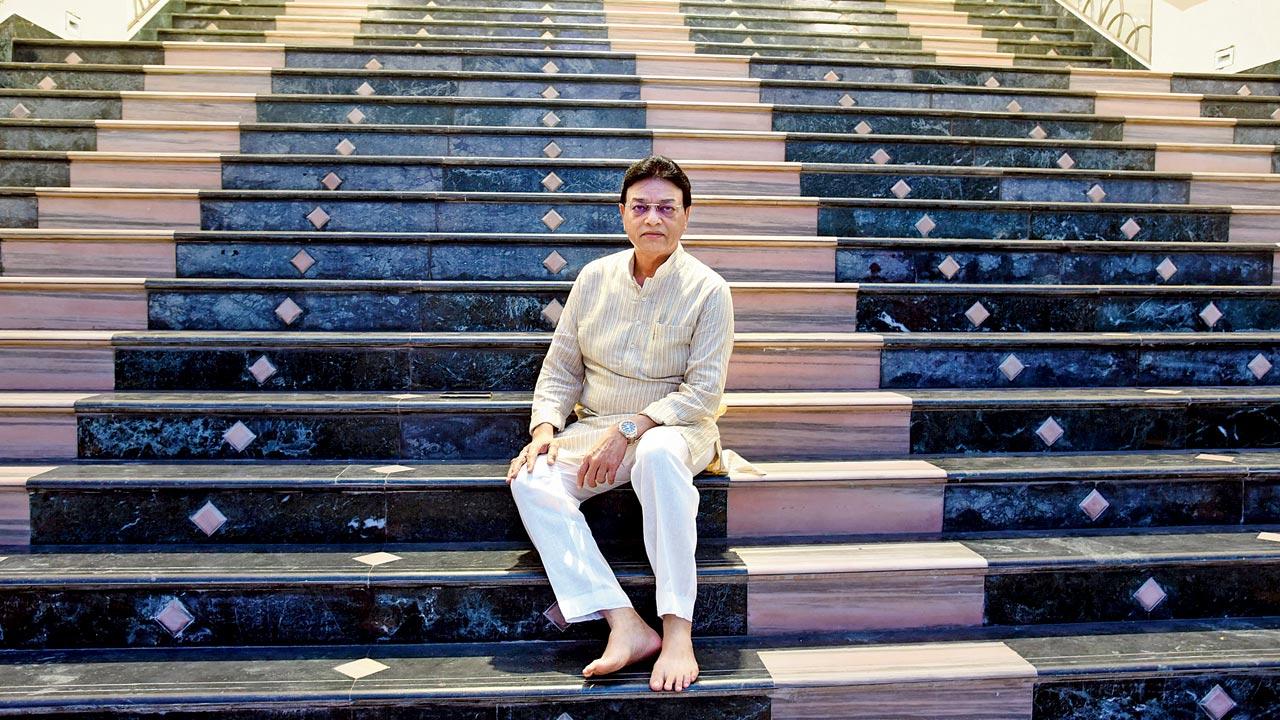 Hussain has been practising to recite the azaan in the same manner as it’s played in Mecca and Medina
Hussain has been practising to recite the azaan in the same manner as it’s played in Mecca and Medina
To ensure that people don’t crowd on the street and inconvenience passersby during namaaz timings, Hussain also started having two sessions of Friday prayers, as opposed to one. “We should not offer namaaz on the filthy streets and gutters. And I wanted to set an example by doing this.”
On Eid, usually, nearly 8,000 devotees assemble at the mosque, for one session alone. “This time to avoid that, we had three prayer sessions [6.45 am, 7.45 am and 8.45 am]. That way, nobody offered namaaz on the streets. Community members have taken this [the restriction] in the right spirit. Many mosques in the neighbourhood and across the state followed suit.” He feels that if every mosque decides to hold more prayer sessions, it will also help increase job opportunities for religious heads, who serve there.
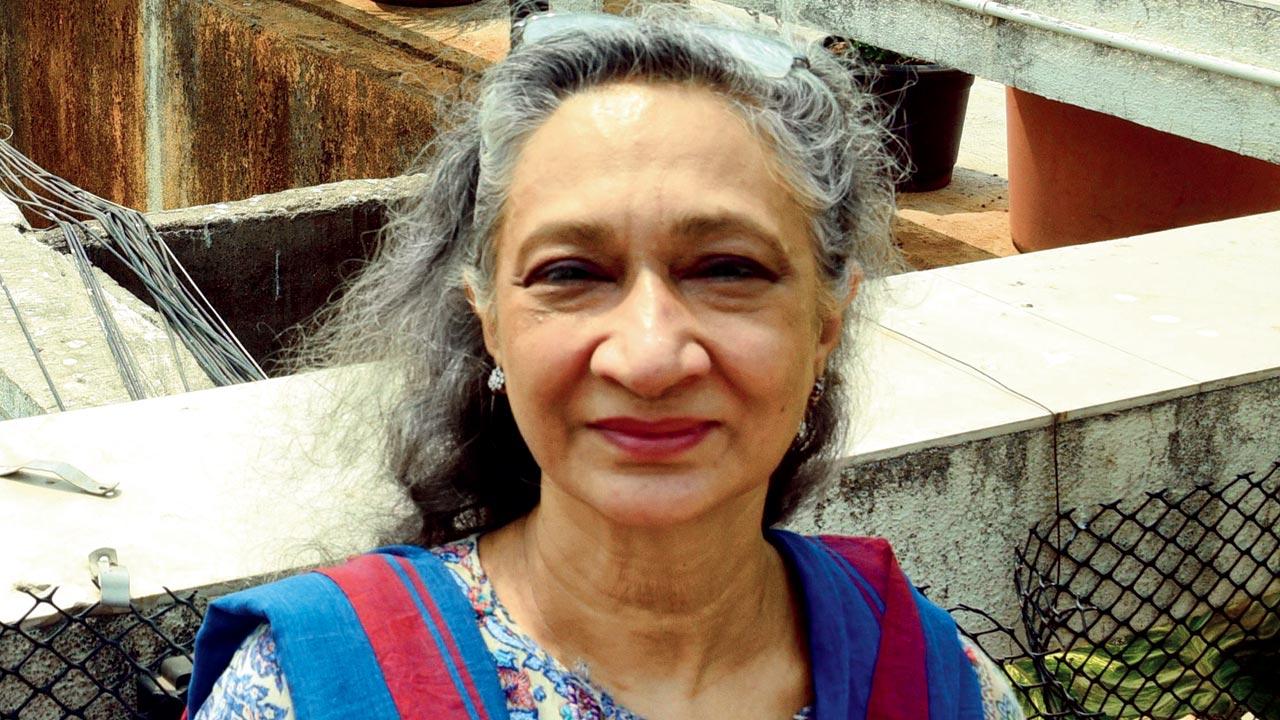 Sumaira Abdulali
Sumaira Abdulali
Iqbal Mahadik is the president of the Mira Bhayander Masajid Madaris Federation, which has over 200 masjid representatives under it. Over the last few weeks, the social activist, who is also trustee of Sana Masjid, has been holding meetings with fellow community heads, guiding them with getting police permissions in place to use the loudspeakers. “We also have a WhatsApp group, where we have shared the application process in detail. For those still struggling, there are members helping them. We are also counselling them, so that they do not fall prey to divisive politics,” he says. “The police has been cooperating with us. In fact, the officers have been visiting the mosque and setting the volume on our sound systems, so that we do not exceed the decibel levels. This is still ongoing, because they cannot cover all mosques at one go.”
Mahadik, who also has a real estate and software technology business—his company developed the FIR safety app—has been working on building a tech device, which will allow members to listen to the azaan in their homes. “It will be more like a [wireless] speaker that one can install in their homes, and hear the azaan live daily. Right now, we have mooted the idea with community members, and hope to receive some feedback. This sort of technology will require monetary investment, and we want to know if people really want this,” he says, adding, “My personal view is that if a mosque is situated in an area, where you don’t have a very large population of Muslims, it doesn’t make sense to play the azaan aloud. But, let me clarify, this is not the view of the federation. Our faith doesn’t teach us to cause inconvenience to others. And our hope is that others see that we are making every effort.” Abdulali says that any process of change is slow. “But the fact that many are making the attempt is good, because it goes to show that people have understood the seriousness of noise pollution. If they manage to set an example, others will follow.”
1936
Year when loudspeakers were first used on the minaret of a masjid in Singapore, says Sumaira Abdulali
 Subscribe today by clicking the link and stay updated with the latest news!" Click here!
Subscribe today by clicking the link and stay updated with the latest news!" Click here!







